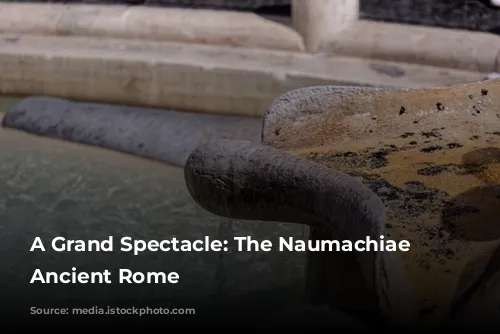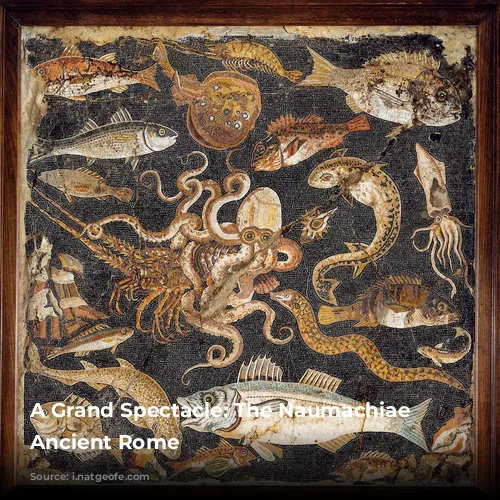Imagine a party in Rome, 46 B.C., so grand that it would be remembered for years to come. Julius Caesar, recently crowned dictator, was returning home after crushing his rival, Pompey the Great. The people of Rome, ecstatic, thronged the streets to greet him. Elephants, bearing blazing torches, illuminated the path of their victorious leader. This wasn’t just a celebration; it was a grand spectacle, a grand beginning.
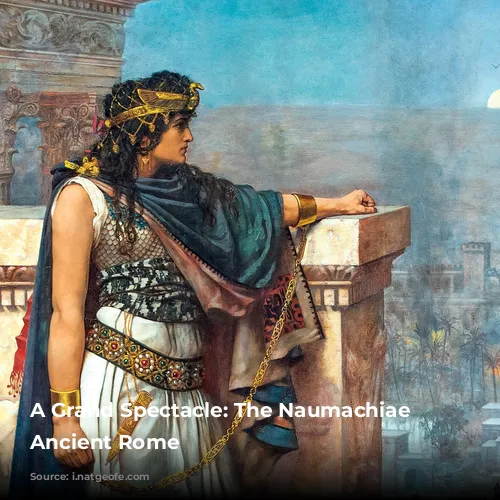
A Giraffe, a Lake, and a Battle
The people of Rome weren’t just content with an enthusiastic welcome. They were treated to a unique spectacle, the likes of which had never been seen before. A giraffe, dubbed a “camleopard” because of its unusual appearance, was on display. This was a rare treat, stirring up excitement among the Romans.
But the main attraction was yet to come. A massive lake, built in the heart of Rome, was filled with water from the Tiber River. This wasn’t just a lake; it was a stage, a battleground for a grand naval spectacle.
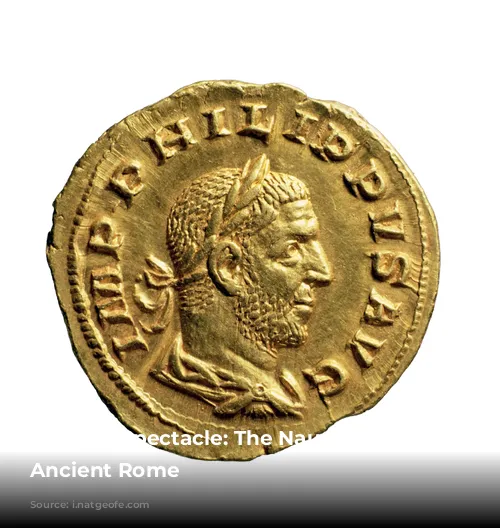
A Thrilling Naval Combat
The lake was the scene of a full-scale naval battle, the first of its kind in Rome. Two fleets, filled with thousands of galley slaves and crew members, clashed in a re-enactment of a historic naval battle. The air buzzed with anticipation as the crowd flocked to witness this astonishing display of military prowess.
Roman historians like Suetonius recorded that people from all over Italy had come to witness this spectacle. The streets were packed with vendors, thieves, and even sex workers. The demand for a good view was so high that people slept in the streets the night before, eager to secure their spots. The excitement reached a fever pitch, and sadly, some people even died in the crush of the crowd, including two senators. This spectacle, the naumachia, from the Greek word for naval battle, was born.
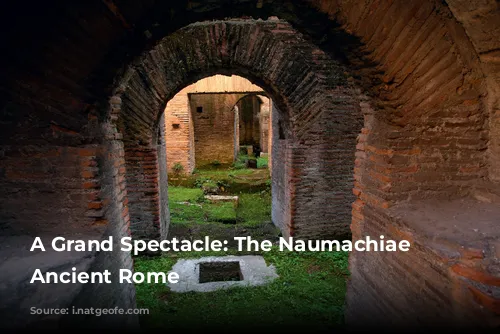
More Than Just Entertainment
The naumachia quickly became a fixture in Roman entertainment, joining the ranks of gladiator fights and exotic animal hunts. These events, popular with people from all walks of life, were more than just entertainment. They were a display of Rome’s power, its advanced engineering skills, and its strength as a civilization.
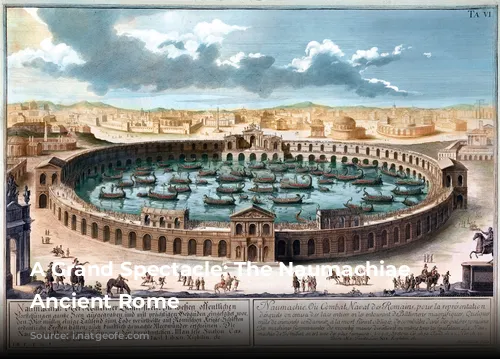
A Carefully Choreographed Battle
Caesar’s naumachia wasn’t just a free-for-all. It was a carefully staged re-enactment of a historical battle between the fleets of Tyre and Egypt, two of Rome’s traditional enemies. Later naumachiae reimagined other famous battles, including those between Athens and Persia, or Rhodes and Sicily.
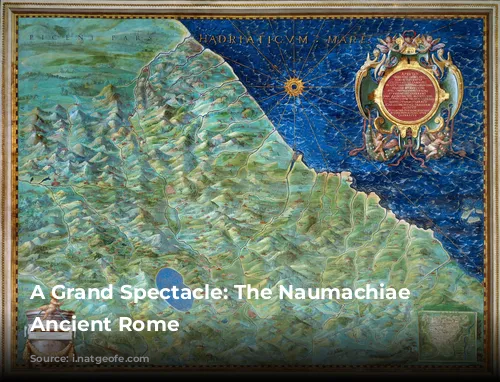
Reality Amidst the Spectacle
Despite the theatrical grandeur, these battles were no mere simulations. They were real battles, with all the violence, bloodshed, and brutality of war. The participants, known as naumachiarii, were often prisoners of war or convicts sentenced to death. They wore the uniforms of the two sides, adding to the realism of the spectacle. However, free men could also participate. It is recorded that a high-ranking official, a praetor, took part in Caesar’s naumachia.
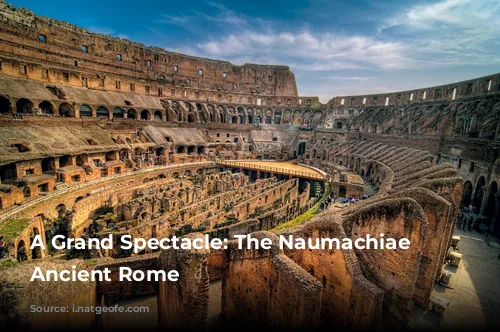
The Grand Scale of the Naumachia
Staging a naumachia required extensive planning and an enormous budget. A suitable site, a team of skilled craftsmen and engineers, and a large number of participants were all crucial elements.
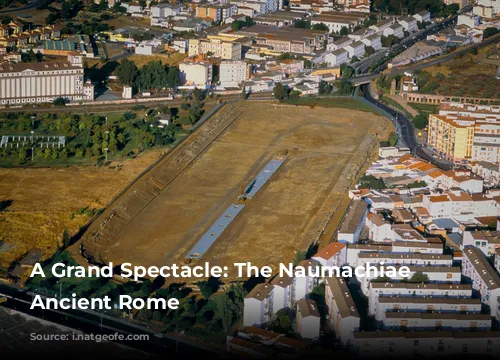
Constructing the Stage
Some naumachiae were held on natural bodies of water. In 40 B.C., Sextus Pompey, Pompey’s younger son and enemy of Octavian, staged a naumachia in the Strait of Messina. He chose to reenact his own recent naval victory over Octavian, a calculated display of contempt for his rival.
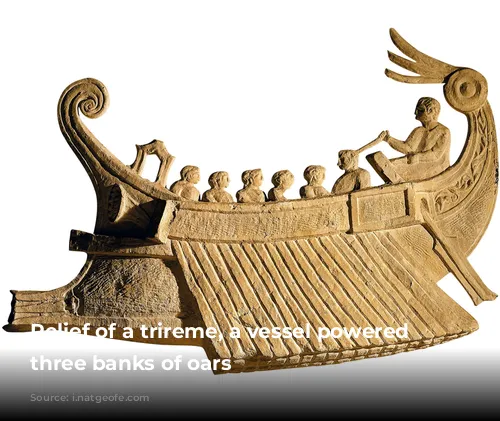
A Lake of Spectacle
However, natural bodies of water were not ideal for viewing the spectacle. The sight of a large, specially dug lake, complete with stands for spectators, became an integral part of the naumachia’s grandeur. It was a spectacle within a spectacle.
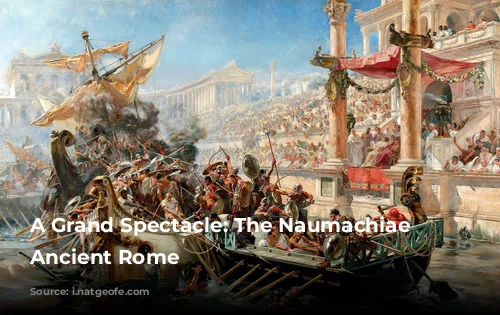
The Legacy of the Naumachia
Emperor Augustus created his own artificial lake, the Naumachia Augusti, to celebrate the inauguration of the Temple of Mars Ultor. This lake became the permanent stage for naumachiae in Rome, at least until the end of the first century A.D.
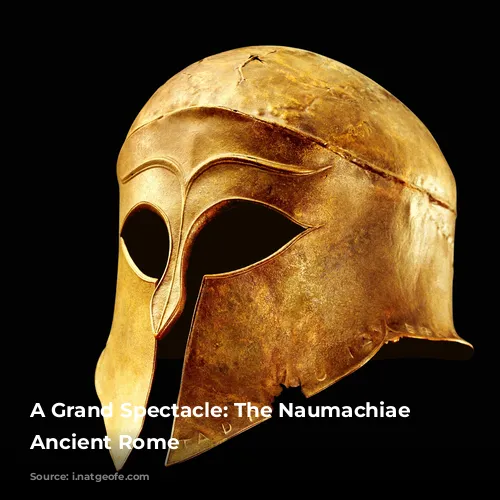
From Lakes to Amphitheaters
Other emperors, like Nero, used amphitheaters as the setting for their naumachiae. Nero even flooded an amphitheater he had built in the Campus Martius, quickly filling and emptying it to allow for other events like animal hunts and gladiator games.
The Colosseum itself, one of Rome’s most iconic buildings, became the stage for several naumachiae. It was designed with canals and pools that allowed for easy flooding and draining, making it a versatile venue for a variety of spectacles.
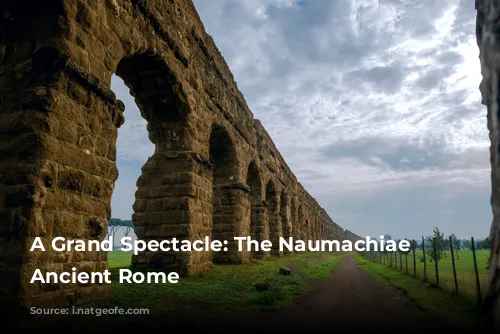
The Decline of the Naumachia
The naumachia, once a grand spectacle, fell into disuse after the third century. This was likely due to the decline of the Roman Empire and its financial struggles.
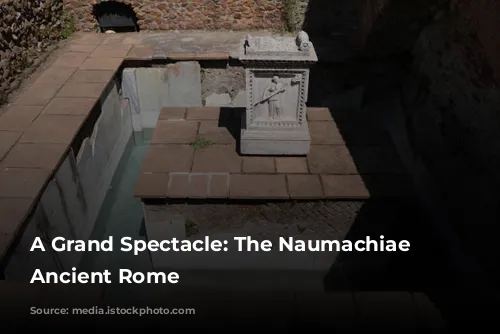
A Legacy of Spectacle
Even after its decline, the naumachia continued to fascinate people. It was a powerful symbol of Roman extravagance, a reminder of the empire’s grand spectacles and the emperors’ megalomania. When interest in antiquity was rekindled during the Renaissance, the naumachia, in a more toned-down form, was revived.
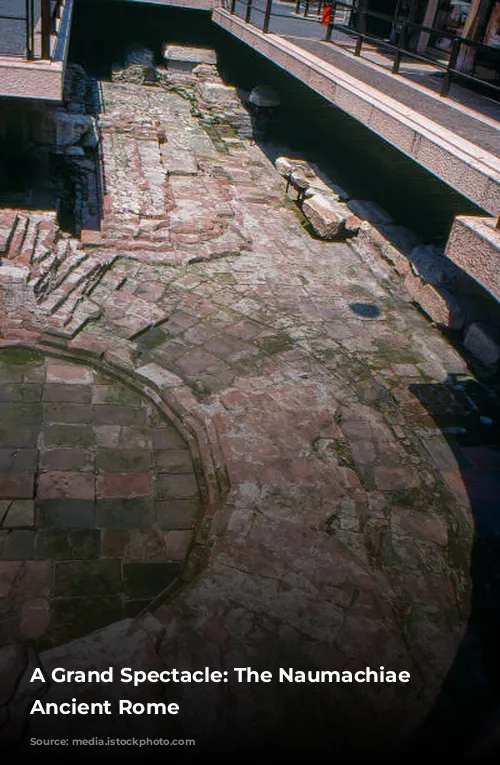
The Legacy of the Naumachia
While the naumachia is no longer a common spectacle, its legacy lives on. This grand display of power, engineering, and spectacle, with its mix of history, violence, and theatricality, remains a unique and captivating aspect of Roman history.
